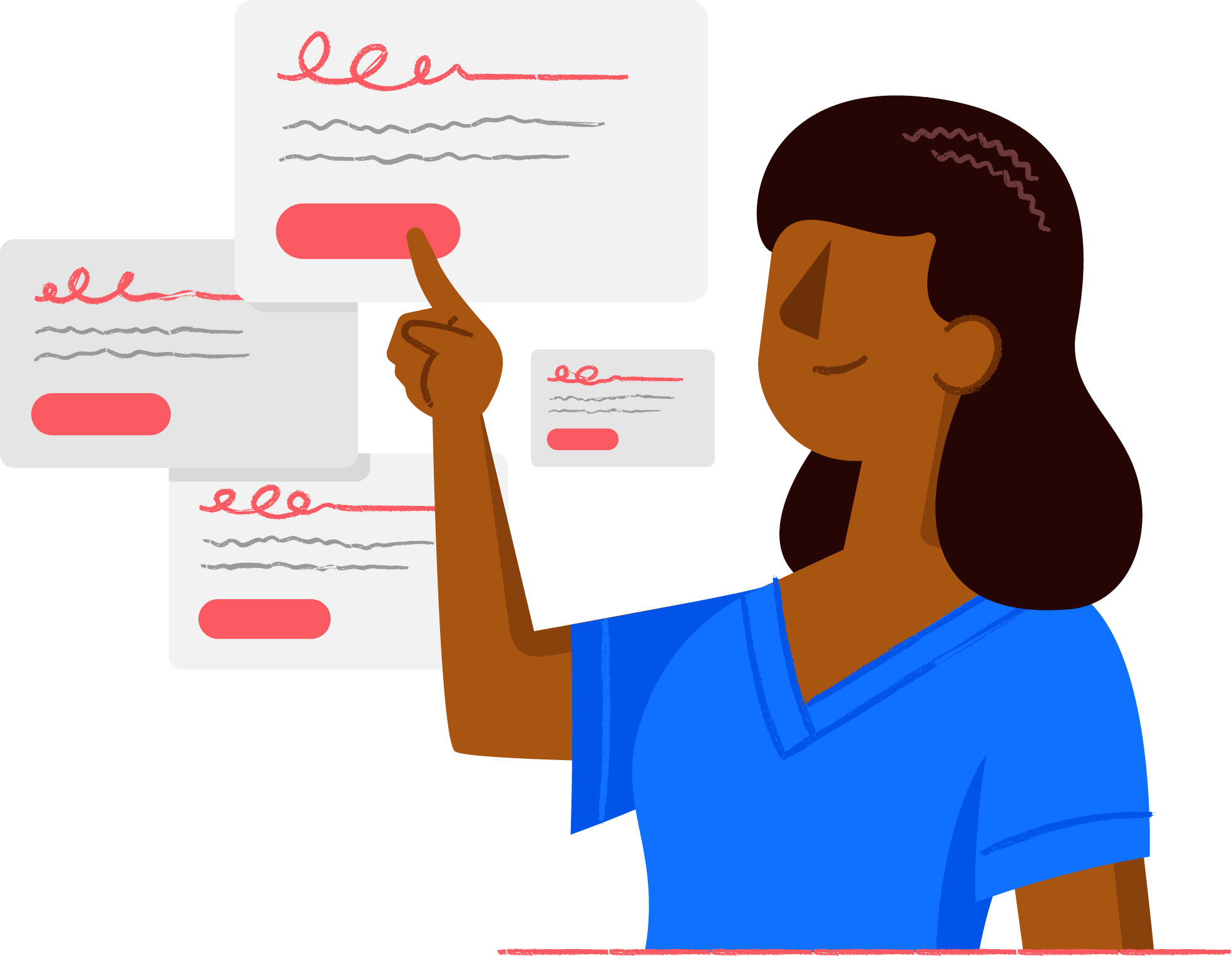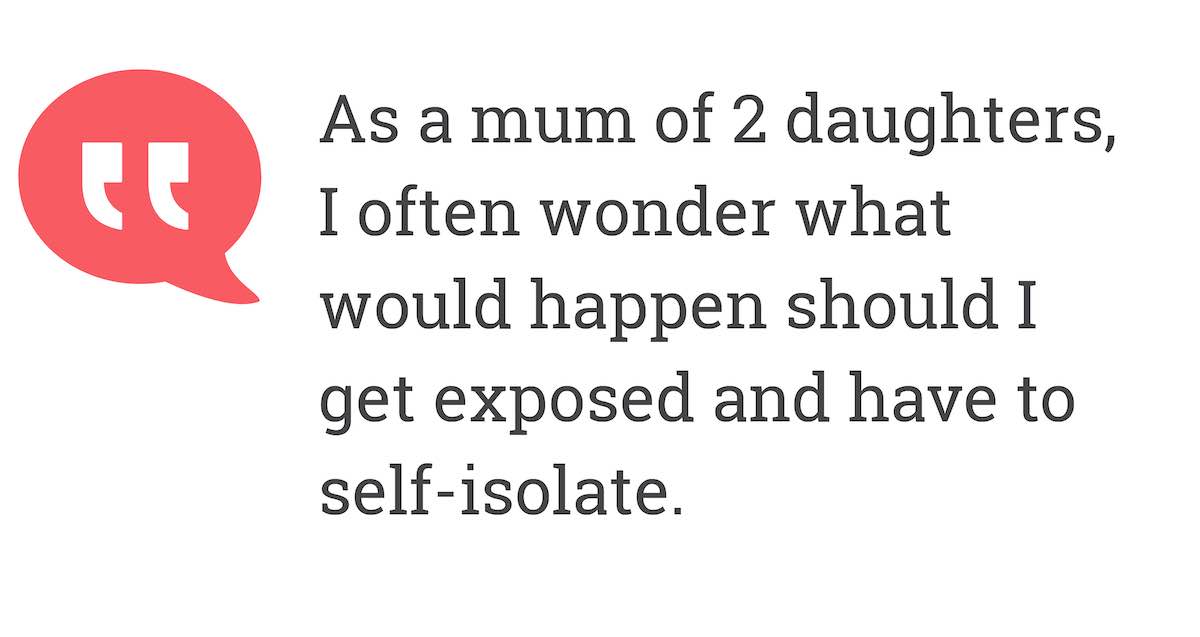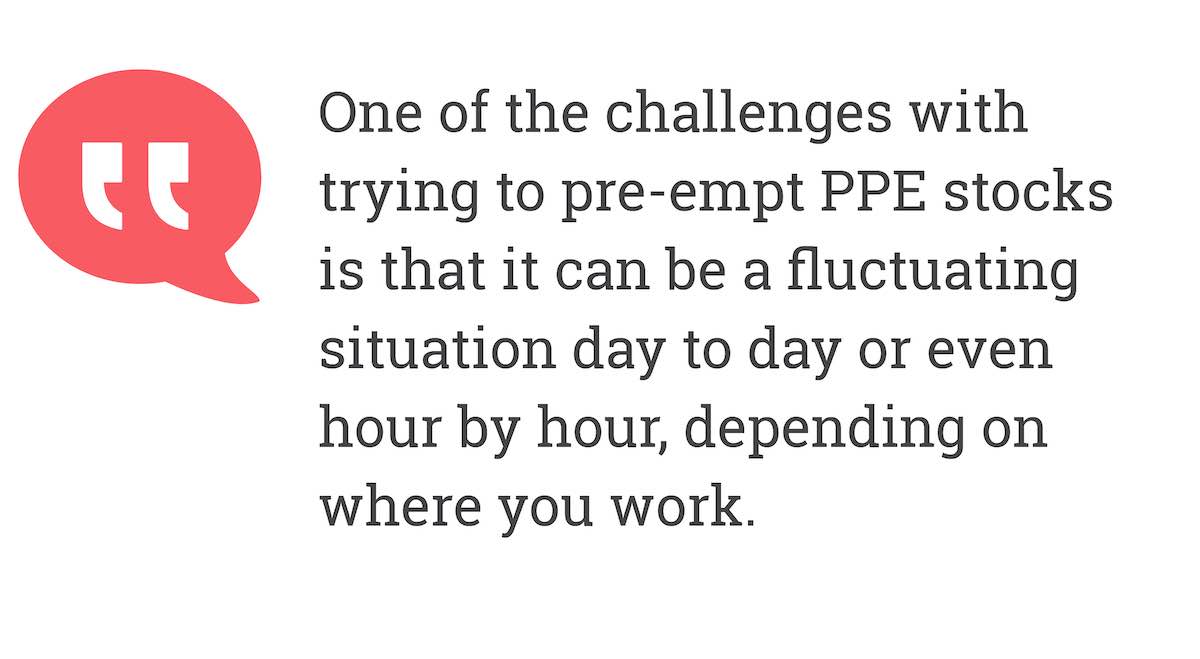- 26 October 2020
- 12 min read
COVID-19 Second Wave: What Do Healthcare Workers & Organisations Need To Consider (Top 10 Tips)
Subscribe "The amount of recent data being published, around COVID-19 can look overwhelming."
"The amount of recent data being published, around COVID-19 can look overwhelming."With Coronavirus cases once again on the rise, Clinical Consultant, Josie Winter, outlines her universal guidance for combating the second wave, applicable to anyone working in Healthcare.
Topics covered in this article
1 - Respiratory Safety & Protection
2 - Personal Outbreak Planning
3 - A Robust Decontamination Schedule
6 - Personal Protective Equipment (PPE)
9 - Human Factors: People, Process, Product
10 - Evidence Based Decision Making

Search Jobs
1000s of jobs for Nurses & Care Professionals. No.1 for UK nursing, care & healthcare jobs.
Search JobsIntroduction
The role of infection prevention and control (IPC) will always be crucial in any healthcare environment; However, the spotlight has been shone on IPC repeatedly in recent months.
Every time we learn of a new outbreak and throughout the entire pandemic, it highlights the need for IPC knowledge, skills and competence at every level in a healthcare system.
As I live Wales and have just gone into a ‘firebreak’ lockdown last Friday evening at 6pm and various tiers of local COVID alert levels are being introduced, having some useful tips for a second wave may be useful.
1 - Respiratory Safety & Protection
This is about ensuring every single healthcare worker (HCW), regardless of where they work in the health and social care sector, has access to a sustainable and reliable respiratory protection.
We predominantly have 2 types currently in use right now within the UK health and social care sector.
Type 1: This is where most critical care and intensive care units a are at right now, or indeed any HCW who is involved with Aerosol Generating Procedures.
And the use of either a single use or sessional use FFP3 mask is needed.
There were many challenges earlier in the year with the logistics and supply chains for FFP3.
In addition, challenges with fit testing and failure of fit testing also occurred.
Interestingly over in the US, the CDC has been looking into other alternatives such as re-useable elastomeric respirators, as a more sustainable way of offering respiratory protection, to US healthcare workers, however the jury is still out in the UK on this one.
Type 2: This is also extremely relevant due to the sheer numbers of HCW’s that fall under within this type of use, and that is of the Surgical IIR face masks.
Again, there were many challenges earlier in the year with the logistics and supply chains for this essential piece of PPE.
Furthermore, compliance to correct use of face masks is a bit hit and miss generally.
There are many occasions, where we may go to our local supermarket or walk down the road to see several people with masks hanging down past their nose or chin.
This type of face mask has its own set of compliance challenges not just in healthcare, but in the wider public too.

What Do You Think?
Ask questions, comment and like this article below! Share your thoughts, add your opinion in the comments below.
Comment2 - Personal Outbreak Planning
The harsh reality is that many HCW’s have already contracted COVID-19 and sadly some have gone on to lose their lives.
During the first wave of COVID-19 going back to March, we heard stories of many frontline HCW’s leaving their families and moving out of their family homes for weeks and months on end, to ensure they kept their families safe.
Anyone who works within health or social care will know that this is still an area of concern for many HCW’s, especially for those who have children, or clinically vulnerable people at home.
Would having a family preparedness plan seem such an extreme idea?
Having a good understanding of your living situation and available support?

As a mum of 2 daughters, I often wonder what would happen should I get exposed and have to self-isolate.
Thankfully, we have a reasonable sized house with a few bedrooms so it would be fairly easy for me to keep my distance.
My husband and I are in good health, as are our kids, but this is not the case for everyone.
Health conditions such as obesity (we all piled on a few pounds during the first lockdown), diabetes and COPD, are all considerations to take into account.
3 - A Robust Decontamination Schedule
It still surprises me that a lot of staff working in health and social care do not know that decontamination is a 3-step process of cleaning, followed by disinfection and finally sterilisation (if needed).
Decontamination is a science.
There is a lot more to it than most people think and is definitely an area of IPC that I love to explore in great detail.
I have often been frustrated with COVID-19 pop-up cleaning companies, offering so called ‘COVID cleans’.
Most of which do not have staff specifically trained in cleaning and infection control to a high level, and do not have the certification to back it up.
They could not confidently explain what a log kill is (best example of this is when a product says it will kill 99.9% of a specific bacteria or virus) and they could not tell the difference between a detergent and a disinfectant.
If you are curious, a ‘COVID clean’ is a made-up phrase, and before you even think about engaging someone who is offering an enhanced cleaning service, please make sure they can back up any claims they are making with facts and certifications.
There’s are a number of reputable and tried and tested products available.
However, many organisations just seem to do one or the other.
There is a massive opportunity here to vastly improve how we safely manage the healthcare environment through effective decontamination programmes.
There are also number of reputable sources of information available, please consider looking at The British Institute Of Cleaning Science website for gold standard decontamination advice.

Become A Community Contributor
Share your story to help and inspire others. Write or create a video about your job or your opinions!
Contribute4 - Eye Protection
Whenever you put on any form of respiratory protection like a mask, looking after your eyes almost goes hand in hand with this.
The mucosal membranes of your eyes are also open to exposure.
Ensuring that all mucosal membranes are covered and protected, including your eyes is vital.
Easy access to those pieces of PPE equipment is important so HCW’s can have them to hand and easily accessible.
5 - Staff Morale & Motivation
We often hear about having a patient safety culture and blame free environment in healthcare and this really starts with great leadership.
There is an opportunity now, to look at the past situation from March until now and evaluate any lesson learnt.
What has been done well, and what has not gone so well?
What concerns do staff have?
Are issues dealt with effectively and in a timely way?
One other major area of concern I am hearing of almost every day is about safe staffing levels (either from staff sickness or staff needing to self-isolate), staff burn out and information saturation from the constantly changing COVID-19 guidance.
This is a difficult situation, as we want staff to be compensated correctly for doing the right thing and staying away if they are ill, but the economic situation does not match this currently for most households.
6 - Personal Protective Equipment (PPE)
Monitoring The various UK Public Health Authorities have provided some useful information and guidance, including poster and videos around what we should and should not be using in terms of PPE and how to don and doff PPE correctly.
The major differences we have seen here in the UK has been the extended use of either a surgical mask or respirator in any type of health or care environment.
The supply chain issues we experienced early on in the pandemic have created global backlogs.
The use of a surgical masks going forward as we know is going to be important.

One of the challenges with trying to pre-empt PPE stocks is that it can be a fluctuating situation day to day or even hour by hour, depending on where you work.
Again I look to the US for some IPC inspiration and come across the CDC’s PPE burn rate calculator.
The purpose of this calculator is to help health and social care organisations calculate their usage of PPE over a specific duration of time.
Which is so helpful in trying to monitor, manage and order the right level of supply.
It helps to mitigate the issues of stockpiling.
That way we’re not stockpiling things that we don’t need.
7 - Hand Hygiene Compliance
This should come as no surprise to any HCW but we know that if we keep our hands clean, and follow the other 9 standard infection control precautions, that we’re going to break the chain of infection not only for COVID-19, but a whole host of other pathogens.
Putting this all together will really help to form a solutions-based approach to your Infection Control framework.
Hand Hygiene is one of the single most importance IPC precautions we can.
How often are auditing hand hygiene, every week, every month, every day?
Are you sure it is at 100% compliance?
8 - Risk Assessments
Building on the premise of an IPC framework or strategy to beak the chain of infection.
I’m sure you have all seen the upside triangle type diagram from the Health & Safety Executive this is the hierarchy of controls.
In terms of IPC towards the bottom would be interventions that may be least effective in stopping infection transmission and at the very top of that hierarchy of controls is elimination, so this would be something like a world-wide effective COVID-19 vaccination programme.
So in between is where we can implement all of the infection control precautions detailed above.
9 - Human Factors: People, Process, Product
In an ideal world all healthcare organisations wants to have the appropriately trained staff.
If there has been one key lesson learned already during COVID-19 it’s that we need to make sure that we have the right people that with a skill set that is diverse.
We may need a Nurse to function more like a Doctor sometimes or a Carer to upskill and perform more advanced tasks.
During the pandemic I have been training up and army of IPC Champions and IPC Leads across the health and social care sector but trying to define and provide a role and responsibilities description has been tough.
Nevertheless, having an accurate role description, with key deliverable and assigned competencies provides clarity and a goal to work towards.
Another large section of my teaching around IPC recently is almost a back to basics.
Knowing and being able to confidently perform and process map how you deliver all 10 standard precautions and transmission-based precautions across your healthcare system is key.
As a healthcare system we have had to stop a lot of routine health and social services.
Perhaps because we could not function operationally with limited resources or skilled staff were deployed elsewhere, this has taken a huge toll, and the catch up will place even more strain on an already overwhelmed system.
10 - Evidence Based Decision Making
Since the start of the pandemic there have been in excess of 100,000 articles, papers and clinical case studies relating to COVID-19 , and this is just on the google scholar database.
The amount of recent data being published, around COVID-19 can look overwhelming.
If you can set aside some dedicated time, whether this is on your own or as part of group to look at what research is coming out relevant to your specialty area.
I can guarantee you will find something of interest.
So there we have it my top 10 tips for COVID-19 ,and approaching a second wave.
If you want to discuss anything in the article with me, please get in touch on:
josie@advancedcinicalsolution.co.uk
01633 415 427
Let me know in the comments your thoughts on the second wave and the advice I have given above - let's chat there!
Oh, and please Like this article to let me know you enjoyed it - thank you!






About this contributor
Clinical Consultant
I’ve worked for the NHS - originally as an ODP - and for private healthcare organisations including a large corporate med-tech organisation. I’ve developed and delivered hundreds of clinical audits and quality improvement plans and trained thousands of healthcare staff in various clinical skills. I co-founded and head up a consultancy that helps healthcare providers achieve enhanced patient safety.
More by this contributorWant to get involved in the discussion?
Log In Subscribe to commentKate Nehra
Kate Nehra
4 years agointeresting Read I wonder if the Government would consider face shields in care settings, i mainly speak for myself there ... read more
interesting Read I wonder if the Government would consider face shields in care settings, i mainly speak for myself there are so many different rules out there i was working with elderly and wore a face shield I am asthmatic and find the shields are more comfortable and its easier for me to breath, the district nurses i worked with were absolutely fine with me wearing a shield and understood it can be uncomfortable for people who have respiratory problems, however i have just joined another company and they are adament i cannot wear the face shield and have to wear the surgical mask, i haven't used my ventolin for months and recently using it morning and afternoon since having to wear the surgical mask, i personally feel the shields are alot more hygienic as well and staff who have not got respiratory diseases prefer to wear a shield but can't.
read less